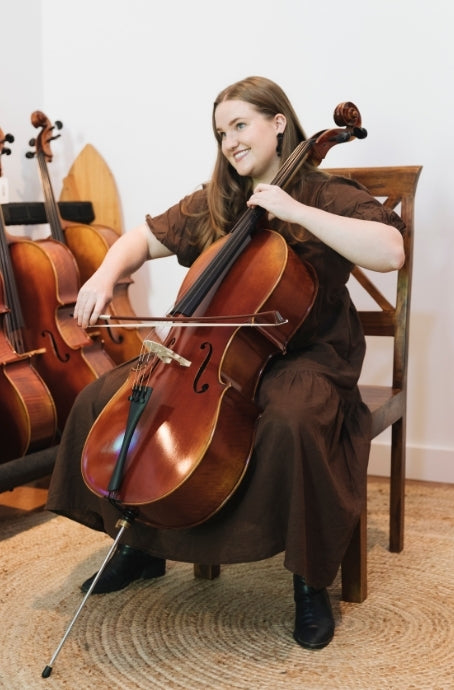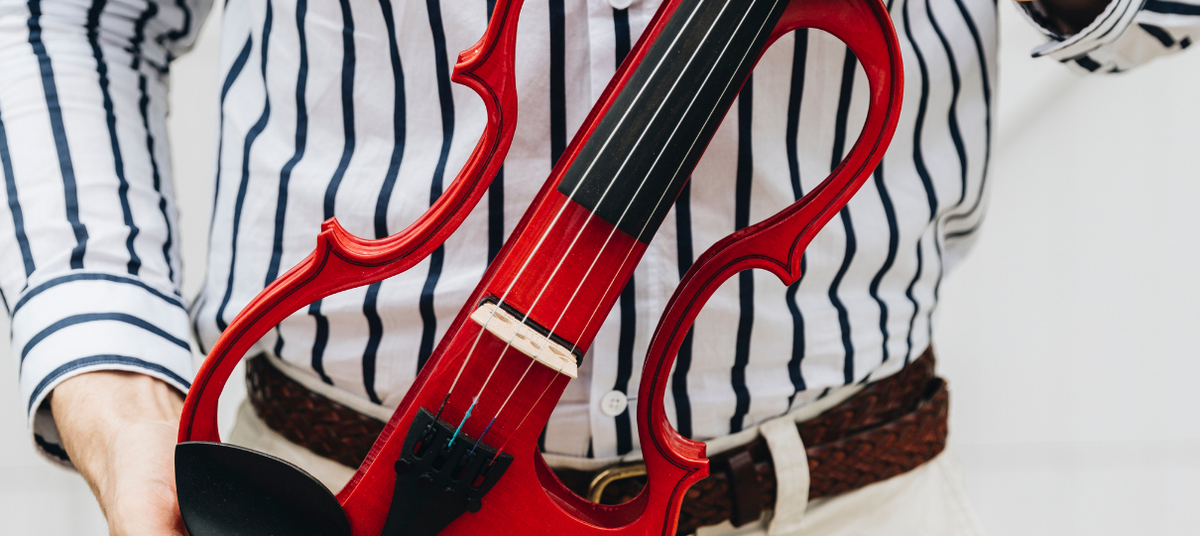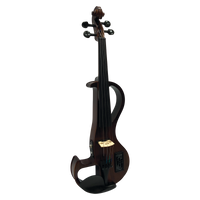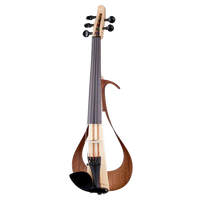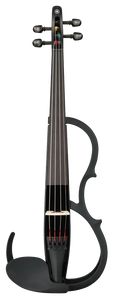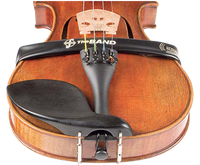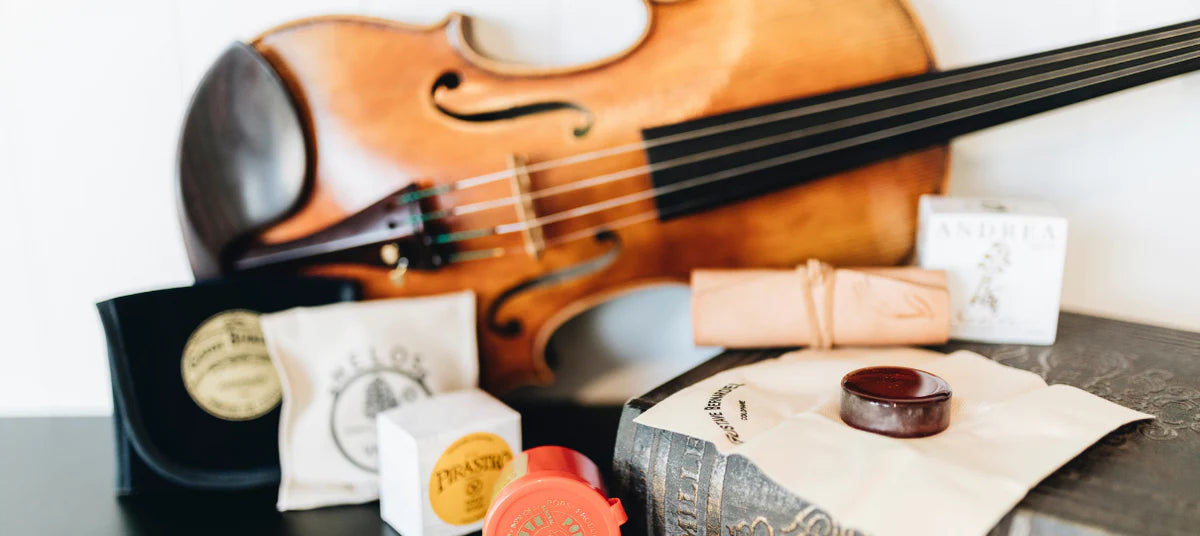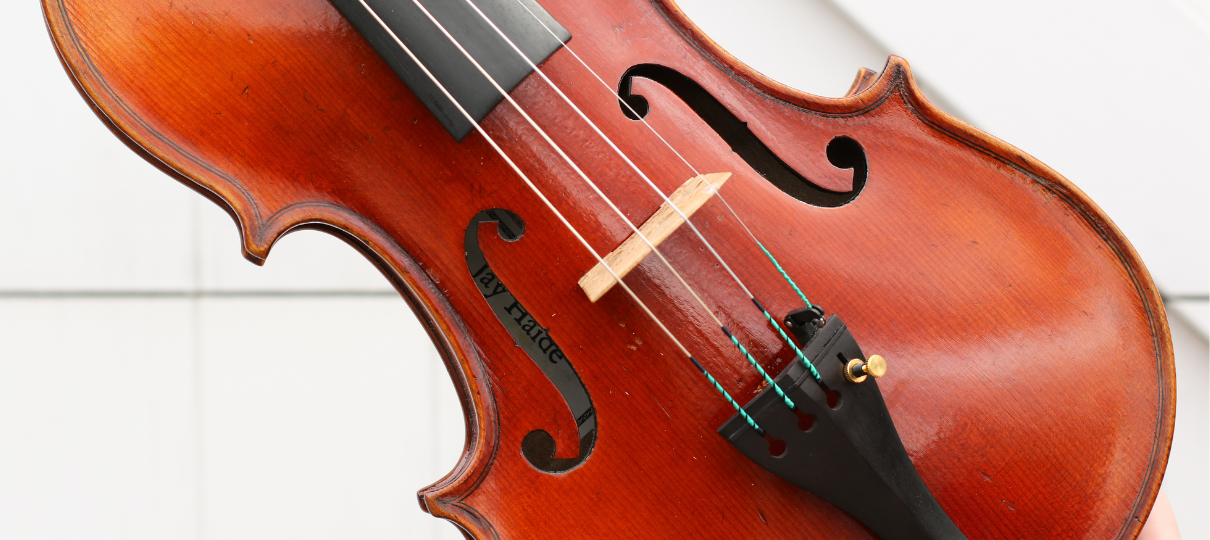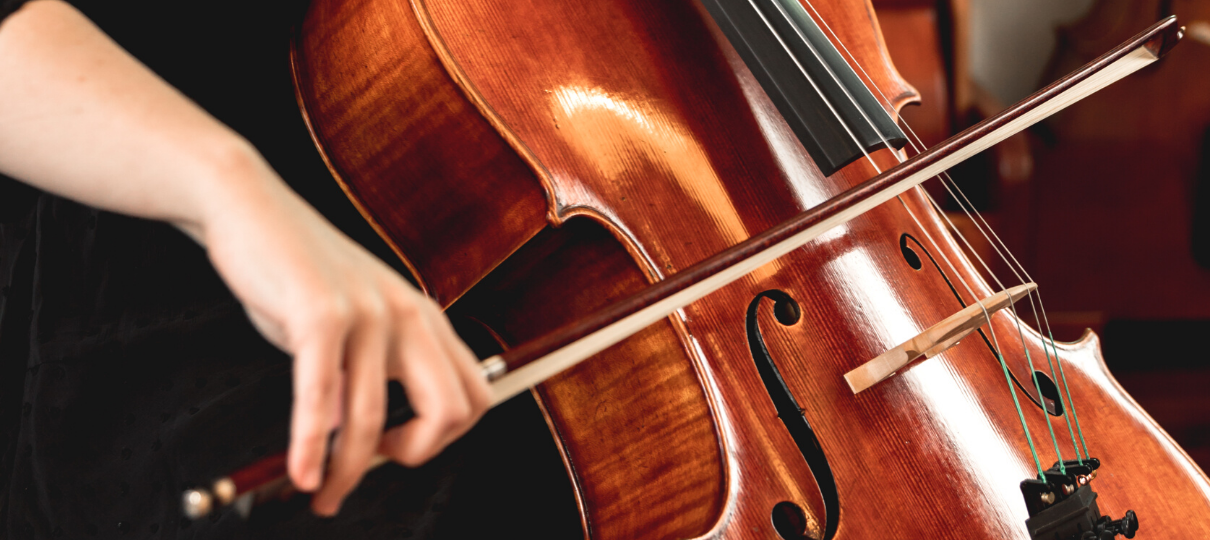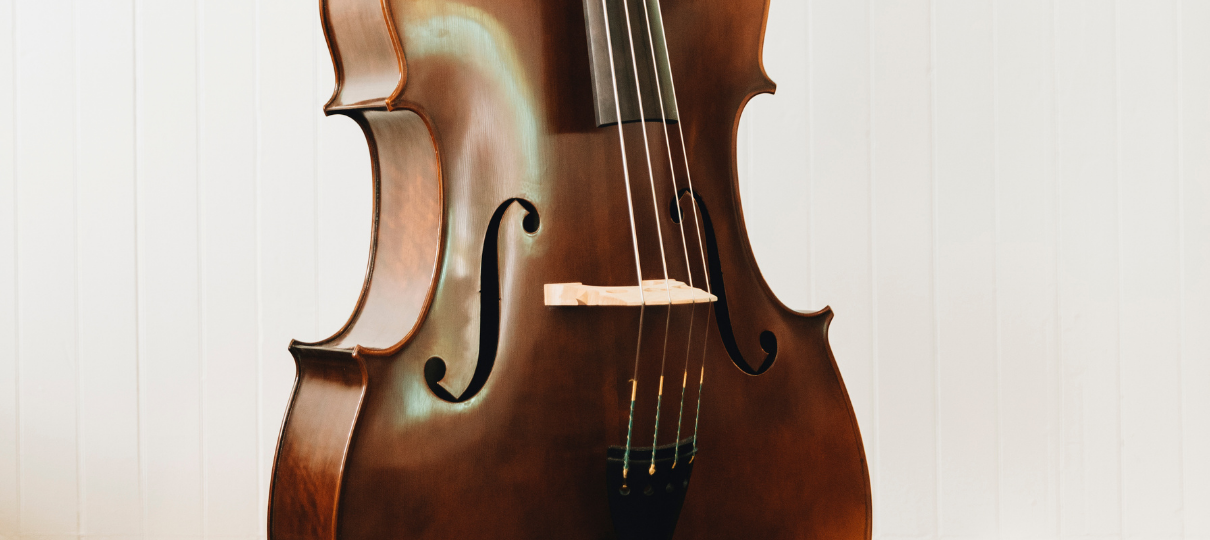Choosing an electric violin can feel a little overwhelming - what brand do I pick? What features am I looking for? How much should I spend? We’ve put together a quick buyer’s guide for electric violins so you can find the perfect instrument for you.
Why should I buy an electric violin?
If you live in an apartment complex, or you’re looking for a way to experiment with your sound and performance, an electric violin may be the perfect investment for you! If you wish to practise in silence, many of the electric violins we sell can be used with headphones, so you don’t disturb the neighbours. When it comes to performing with your new instrument, an electric instrument offers a multitude of performance options, with the help of amplifiers and effects pedals. An electric violin may also be a good option for you if you’re looking to experiment with jazz and rock music, whether you’re playing solo or jamming with a band. Recording is made easy too, with lots of software options on the market.
Most teachers recommend beginning your musical journey on an acoustic instrument, as some electric instruments can vary dramatically in weight, sound and design to acoustic instruments. If you’re learning in a school program, you will certainly require an acoustic instrument for orchestral purposes. Unamplified electric violins can sound quite quiet and different from acoustic instruments, so it’s important to discuss this with your teacher before committing to any purchase.
Learn more about starting the violin as an adult - and what to expect - here.
How much should I spend?
First things first, the price structure for electric violins does vary from acoustics. Some of the very inexpensive electric violins can be made with low-quality materials and tech, which can be frustrating to use.
At Simply for Strings, our electric violins range in price from $660 to $3600. We offer electric violins from leading manufacturers including Hidersine and Yamaha, as we know these instruments are built to last and are fitted with quality tech. All of our electric instruments are professionally set up in our Makers Studio so you can be assured that it will feel as close to an acoustic option as possible. This process ensures you’re getting the best possible sound from the instrument too! Don’t forget when purchasing an electric violin, that you’ll need to factor in the cost of a pre-amp, amplifier and any other electronics you may want to compliment your instrument too, including effects pedals, loop stations and more.
Learn more about our Professional Set Up.
If you’re looking to spend less than $600, we would recommend investing in an entry-level, hand-crafted acoustic instrument, such as the Prelude, and using The Band Pickup to create a much more pleasing sound. This method helps you avoid low-quality electric instruments which could negatively affect your musical journey.

What features should I look for?
When it comes to features, you’ll need to decide what you want from your new instrument. An instrument like the Hidersine EV3 Electric Violin is a great option for beginners and hobbyists who are looking for an affordable silent instrument, which can also be plugged into an amplifier.
Yamaha’s Silent Violin Model 104 is a great option for intermediate and hobbyist players who are looking for more sound possibilities. On this instrument, even without a resonant body, the SRT POWERED system faithfully reproduces the body resonance, sound and ambience of an acoustic violin. The YSV104 is an excellent choice for all players who want to practice quietly with an acoustic violin tone. The YSV104 Silent Violin returns to the original Silent Violin concept as a refined practise instrument that provides an ideal blend of features and playability for violin players.
Yamaha’s Silent Violin Model 250 has been developed by Yamaha for advanced and professional players, with two pickup types and a dedicated control box. This violin establishes a new benchmark for sound quality and player comfort. With its weight of only around 500g, it has the same weight as a traditional acoustic violin. The innovative dual pick up system allows the performer to blend the tone quality from edgy electric to a rich acoustic sound. The external control box contains a powerful pre-amp, master volume control, treble and bass tone controls, as well as quarter-inch and XLR balanced outputs. This model is crafted from seasoned flamed maple, spruce top and fit with ebony pegs, fingerboard.
How does the sound differ to an acoustic instrument?
The most significant difference between electric and acoustic instruments is the sound. Acoustic instruments produce their sound from the resonant wooden body, whereas electric instruments come with pickups, which can be plugged into amplifiers to create the sound and volume. Most pickups are incorporated into the bridge. Some of our electric violins have a 5th string option, which allows you to experiment even more with sound and music you’re playing.
Electric violins do sound different from acoustic instruments, particularly models which do away with excess materials in the body. Some electric violins do sound more acoustic than others, so we recommend trialling a few so you can hear how the tone differs. Generally speaking, as you go up in price, the sound becomes more ‘acoustic sounding’ due to the advanced technology in the instrument itself. We recommend selecting an electric violin that suits your sound preference best - whether it’s bright, dark or well-balanced. Electric violin sounds can be altered with the help of effects and amplifiers, but it’s recommended that you pick a tone that you like, from the get-go.

How does the look differ?
Electric violins are available in a wide variety of shapes, designs and colours. An electric violin can be a great way to show off your personality. There is a wide spectrum of materials used, with some manufacturers offering solid-bodies constructed using exotic materials, as well as more hollow and carbon fibre options, which can help reduce the weight on your shoulder. We recommend trying the different styles out to see which you like best.
Learn more about how traditional violins are made here.
What about the bow?
Some electric violins will include a bow. We recommend upgrading the bow to a quality Pernambuco or carbon fibre if your budget allows. Bows are very important – they compliment your instrument, by bringing out the best sound quality, and also make it possible to accomplish a variety of bow techniques. Weight, balance and flexibility are the determining factors in playing qualities of all bows – all of our bows are hand-selected to achieve the optimal combination of these criteria.
Read our bow explainer here, or learn more about how bows are made.
What about the shoulder rest and chin rest?
It’s really important, whether you’re buying an electric or acoustic instrument, that the shoulder rest and chin rest is comfortable for you. This ensures you can play to your heart’s content without injury! All of our electric violins have a chin rest included with the instrument, however, you may need to invest in a new chin rest and shoulder rest if the combination isn’t quite comfortable enough for you. Most of the electric violins we sell take traditional fittings, so our friendly team will be able to help if needed.
We hope this post has answered some of your burning electric violin questions! If you have any more questions, please don’t hesitate to get in touch with our friendly team. Our team consists entirely of musicians who would love to help. Visit our contact page today!





